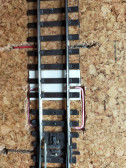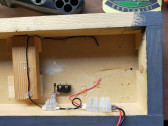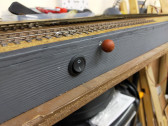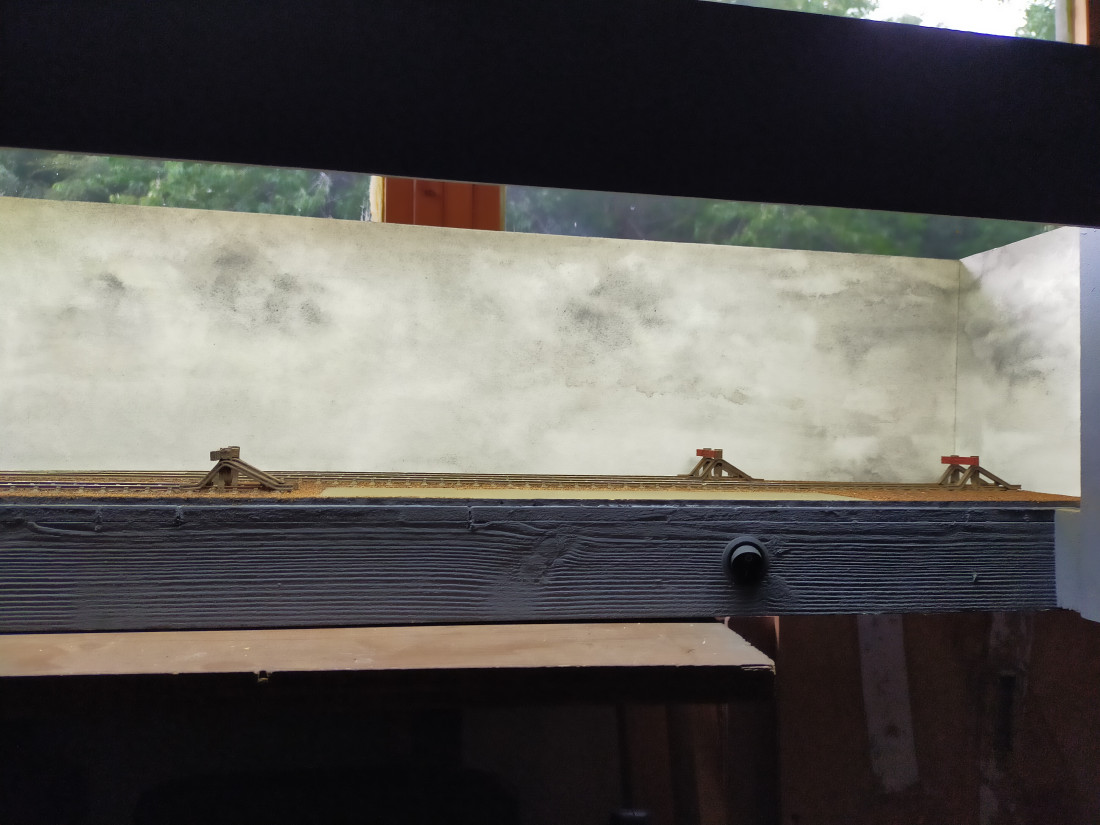Diesel Refuelling Point
Posted
Full Member
Another quart in a pint pot!
I am now in the process of wiring the layout. As usual, I like to join each point or length of track to its immediate neighbours with short jumper wires. The pink wires shown below are connecting the point and adjacent track. This location is immediately above the support for the fiddle-stick on the underside of the board. Accordingly, I was unable to just drill holes and run the wires beneath the board as they would foul said support. The answer was to cut channels in the cork either side of the two rails, and run the wires on top of the baseboard. The channels and wires will be covered later when the scenery is added. The red and black wires further up the picture are the electical feed wires. Again they run away from the rails before disappearing through the baseboard surface to clear the fiddle-stick support beneath.Click on the thumbnail to enlarge same. Terry
 Last edit: by col.stephens
Last edit: by col.stephens
Posted
Full Member
Posted
Full Member
 Last edit: by col.stephens
Last edit: by col.stephens
Posted
Full Member
Terry
 Last edit: by col.stephens
Last edit: by col.stephens
Posted
Full Member
Terry
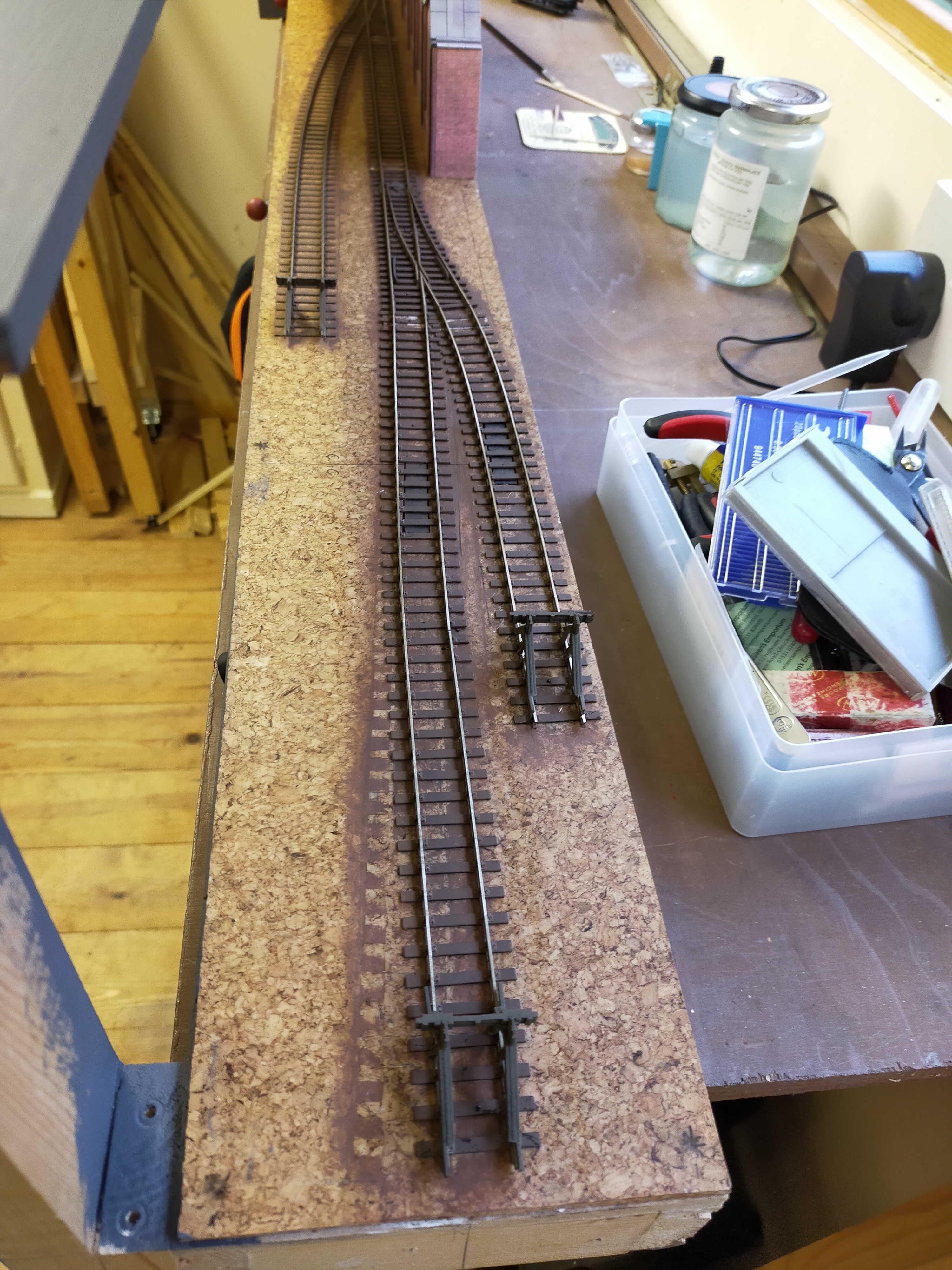
 Last edit: by col.stephens
Last edit: by col.stephens
Posted
Full Member
Terry
Posted
Site staff

Ed
Posted
Full Member
Today I have done a bit more work on the ground cover and although it is not finished, now that I have taken some pohotos, I feel that I can share it with you. The thing which mainly stands out to me when viewing the track in yards and sidings, is that the track is normally buried to the tops of the sleepers. The chairs and rail usually stand clear above and do not have ash or earth clinging to them. I have seen attempts to model this where ready-mixed plaster has been dragged along the track and looks unrealistic because a good portion of it is piled up on the rail sides and chairs. What to use? I considered fine ballast, but it looks like ballast and is not usually spread over the whole yard on the prototype. I looked around for something reasonably fine and preferably free. Enter the humble used tea bag! Yes those soggy brown things which you throw straight into the bin, or compost in my case, at least ten times a day (applies to UK only. Adjust total to suit your location, probably downwards I imagine).
I began by saving all of my used tea bags and laid them out in the sun to dry. Recently , the UK weather has been ideal for this. I then invested 99p in a tea strainer. Every UK home had one of these at one time when loose tea was put in a pot to brew. Of course, the use of tea bags has done away with them, plus tea pots and tea cosys If you don't know what I'm talking about, ask your mum or dad.
I first experimented with tea bags some five decades ago to represent ballast on a small OO Gauge model. I used the tea straight from the dried tea bags and the result? Although a nice brown colour, It looked like the track had been ballasted with tea leaves! So, enter the aforementioned tea strainer. The contents of each tea bag was put through the strainer twice to remove the larger leaves. The resultant finer leaves and dust is what is going onto the track.
Firstly, I decided to fill between the rails and on either side to the ends of the sleepers. I simply poured the tea onto the track and treated it much like the usual ballasts which we use. Once tidied up and removed from the sleeper tops, I sprayed the complete area with plain water.
I had already mixed an amount of PVA with water in a jam jar. I'm not precise about this. I just pour a big blob of PVA into the jar and add sufficient water to make it runny when stirred. This mixture was then applied to the track with a small pipette.
Once the diluted PVA has soaked in (just a few seconds), the tea becomes almost like a mash and can be smoothed and pushed into position with a suitable tool. I use a palette knife bought as part of an artist's set from a cheap stationary chain.
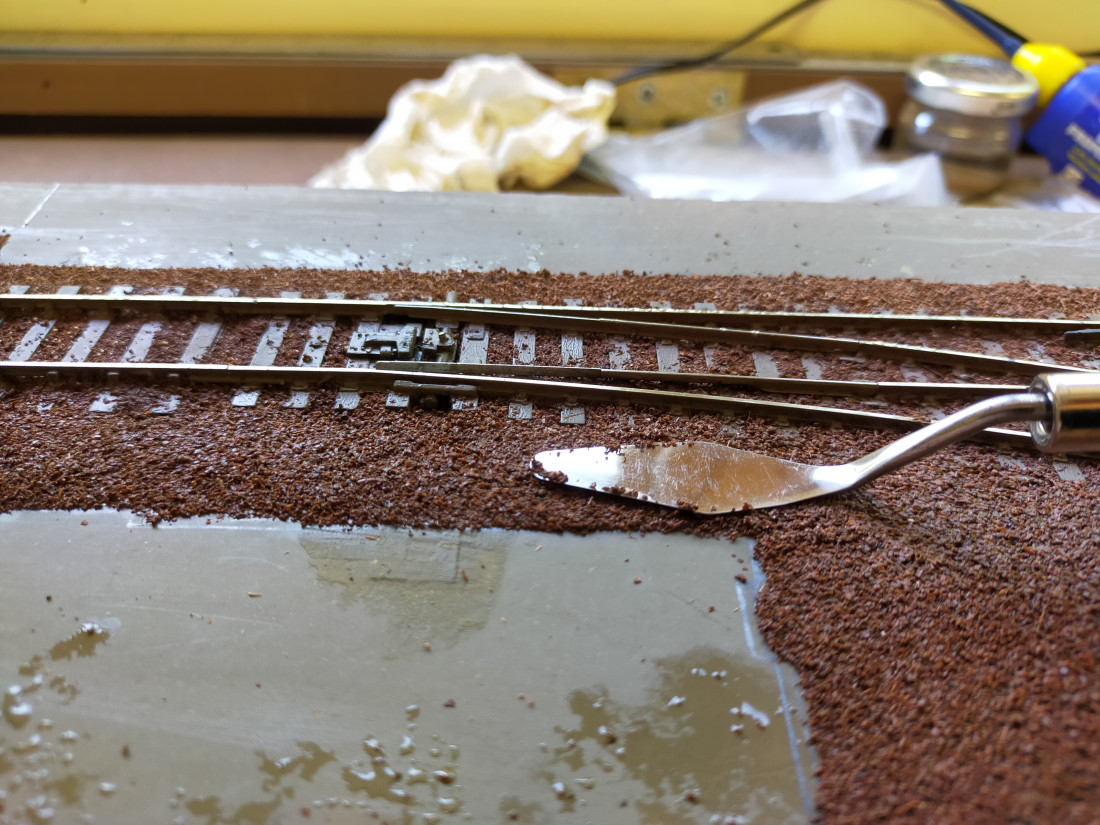
The picture above shows the wet tea being smoothed. As I am using Peco Code 75 turnouts, which have thicker sleepers than the C&L track, the tea has been built-up to the sleeper tops. The turnout and track had been previously treated with the tea and were dry. In this photo I am adding the ground cover from the sleeper ends to the picture foreground.
Terry
Posted
Full Member
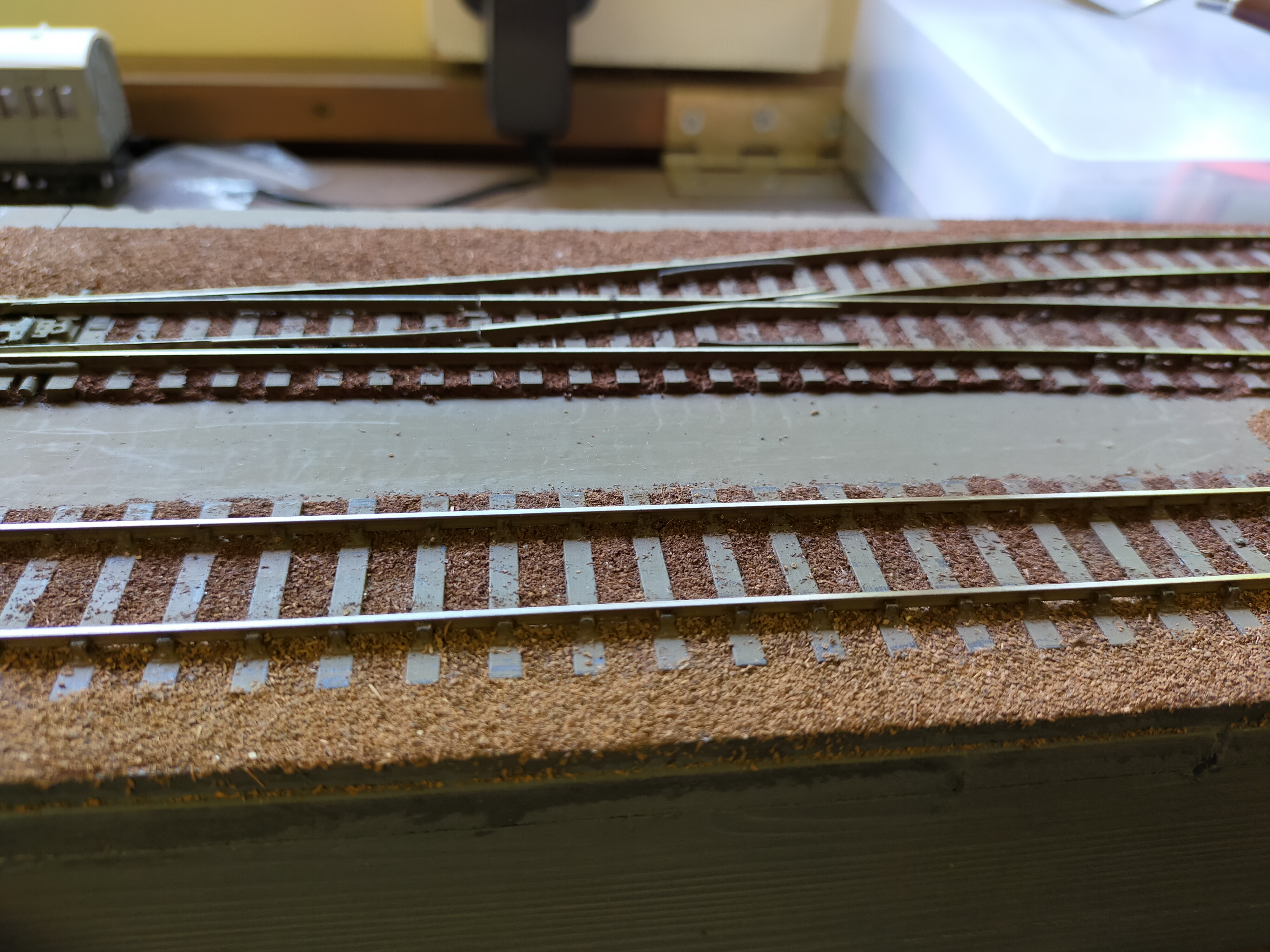
Terry
 Last edit: by col.stephens
Last edit: by col.stephens
Posted
Full Member
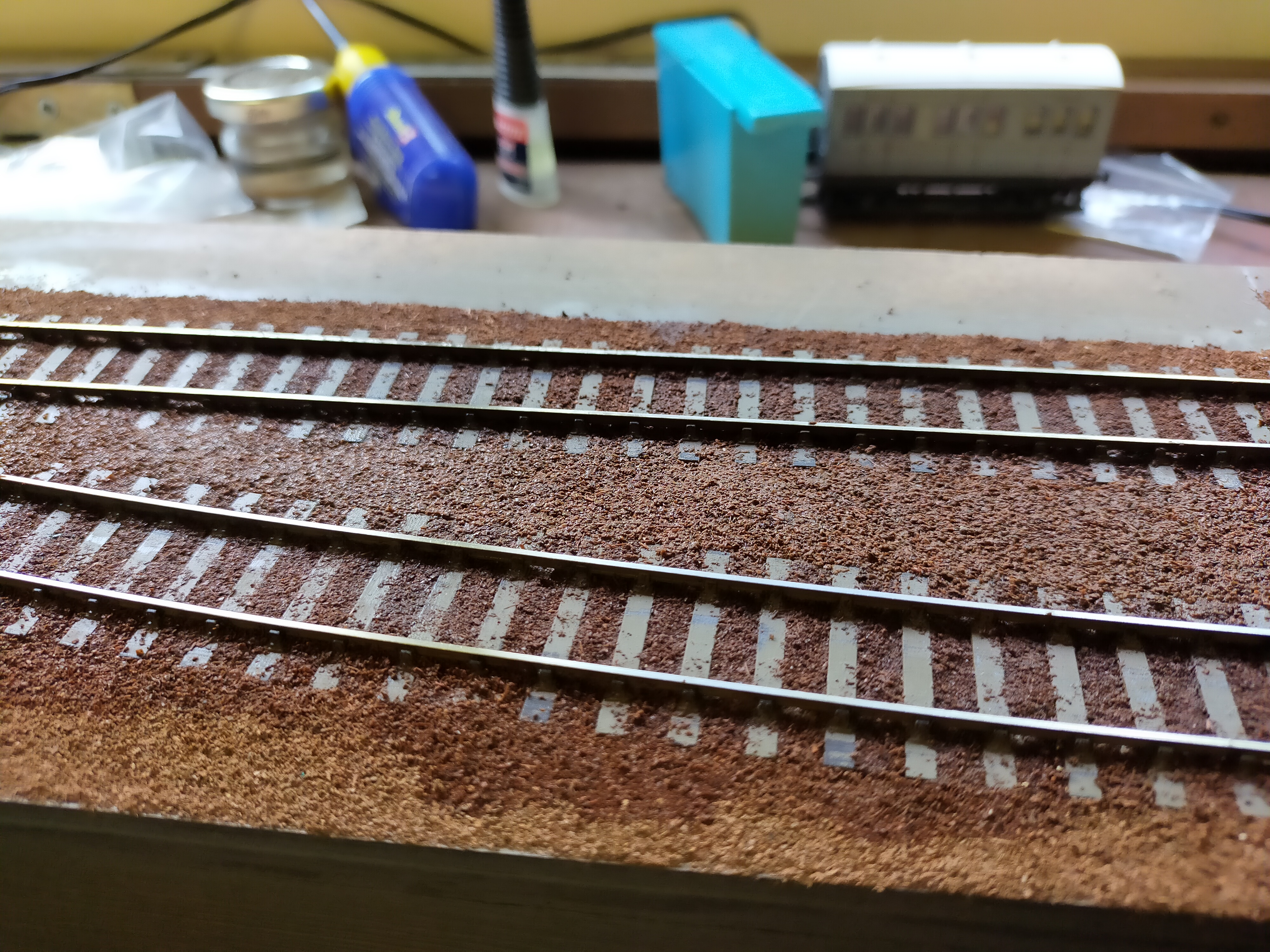
Posted
Full Member
Terry
Posted
Full Member
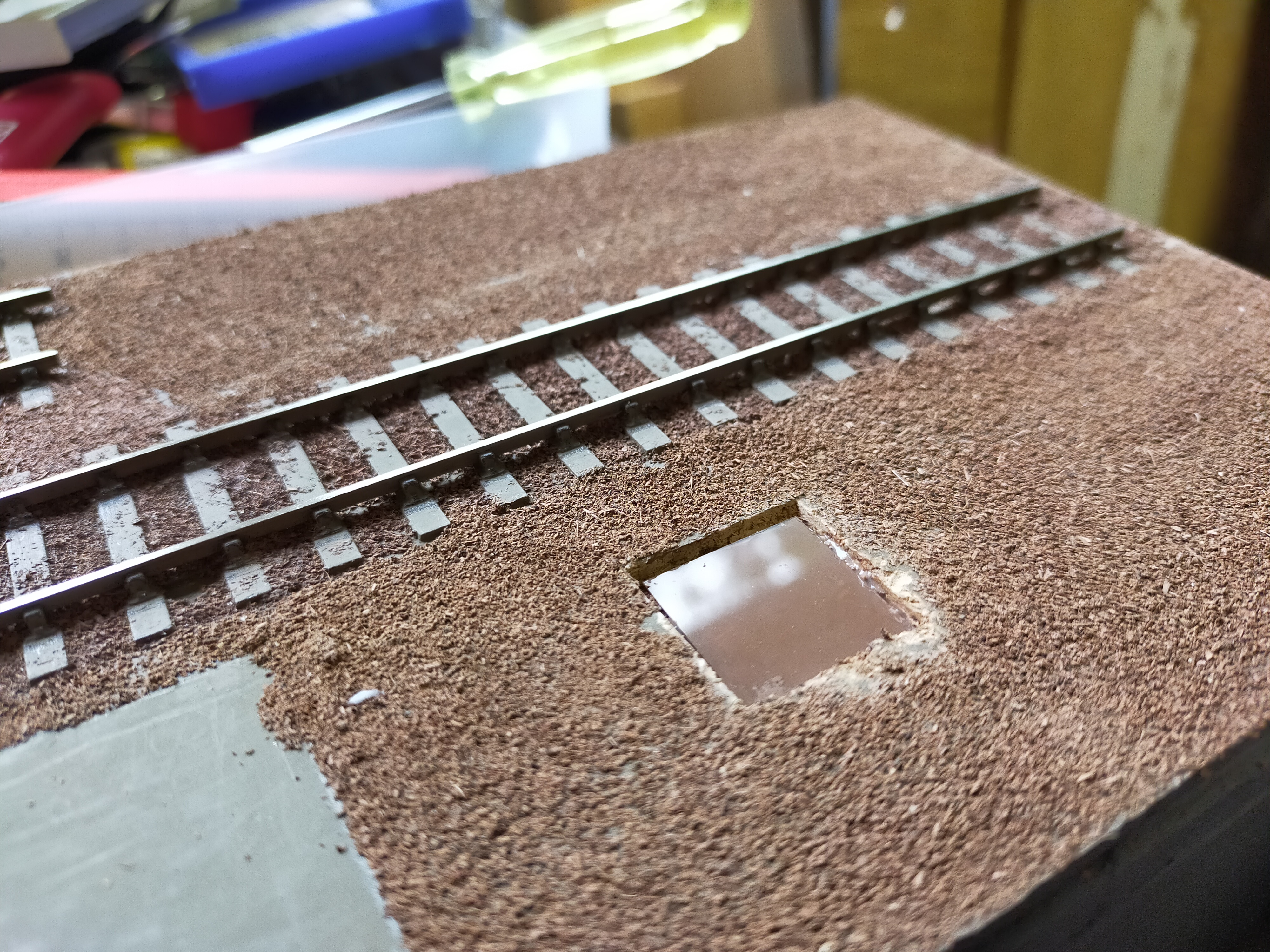
 Last edit: by col.stephens
Last edit: by col.stephens
Posted
Full Member
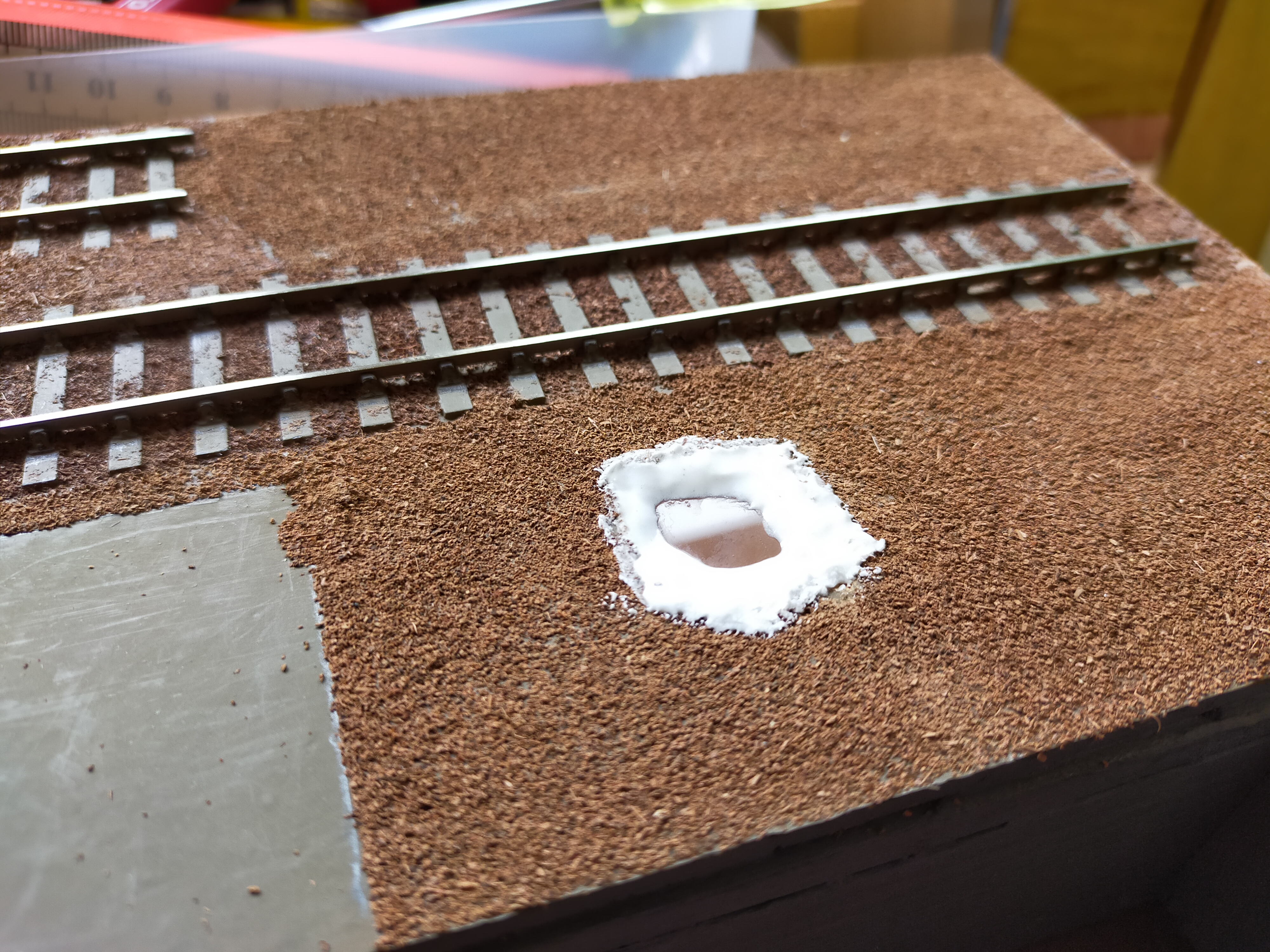
Posted
Full Member
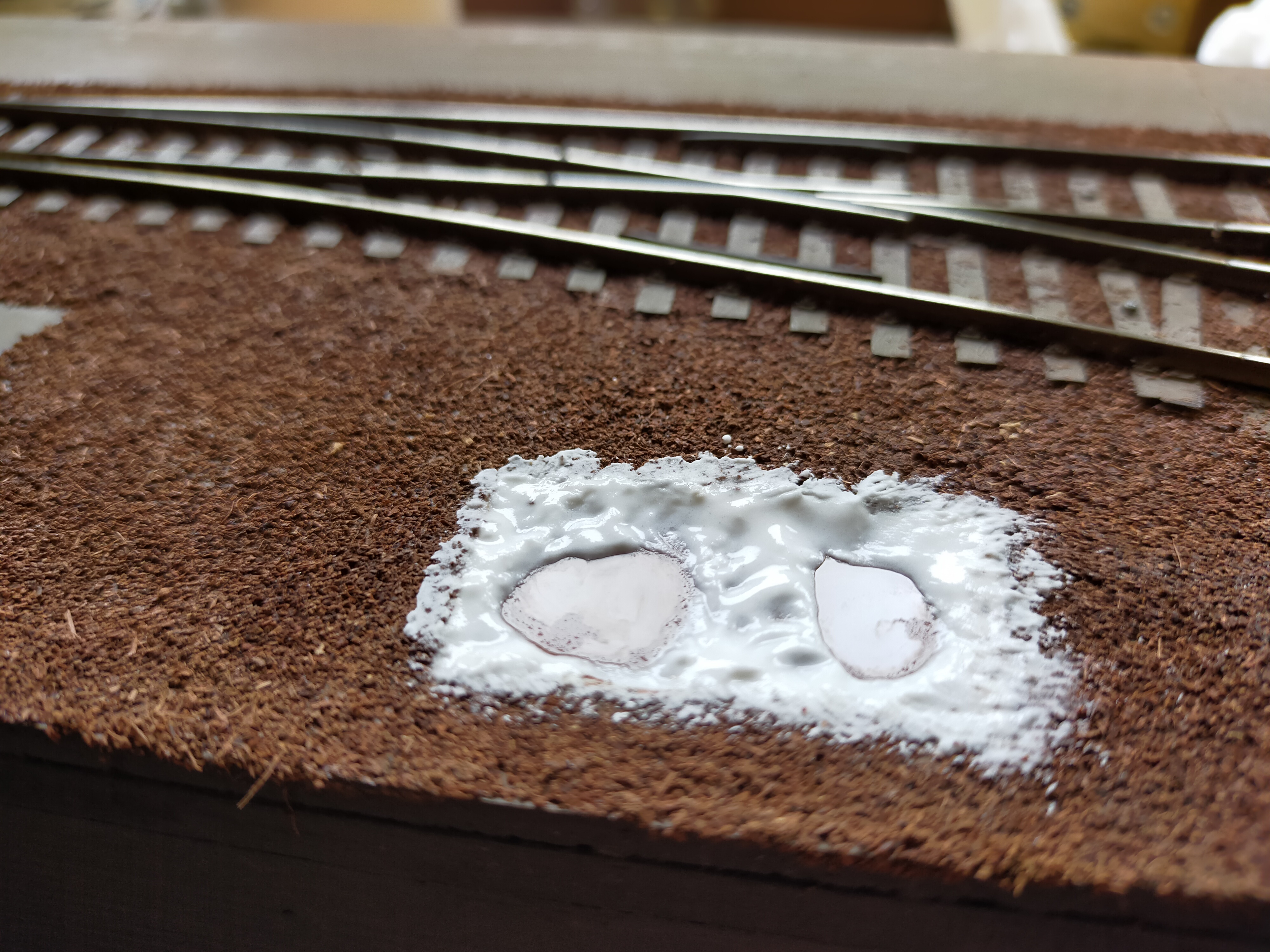
Posted
Full Member
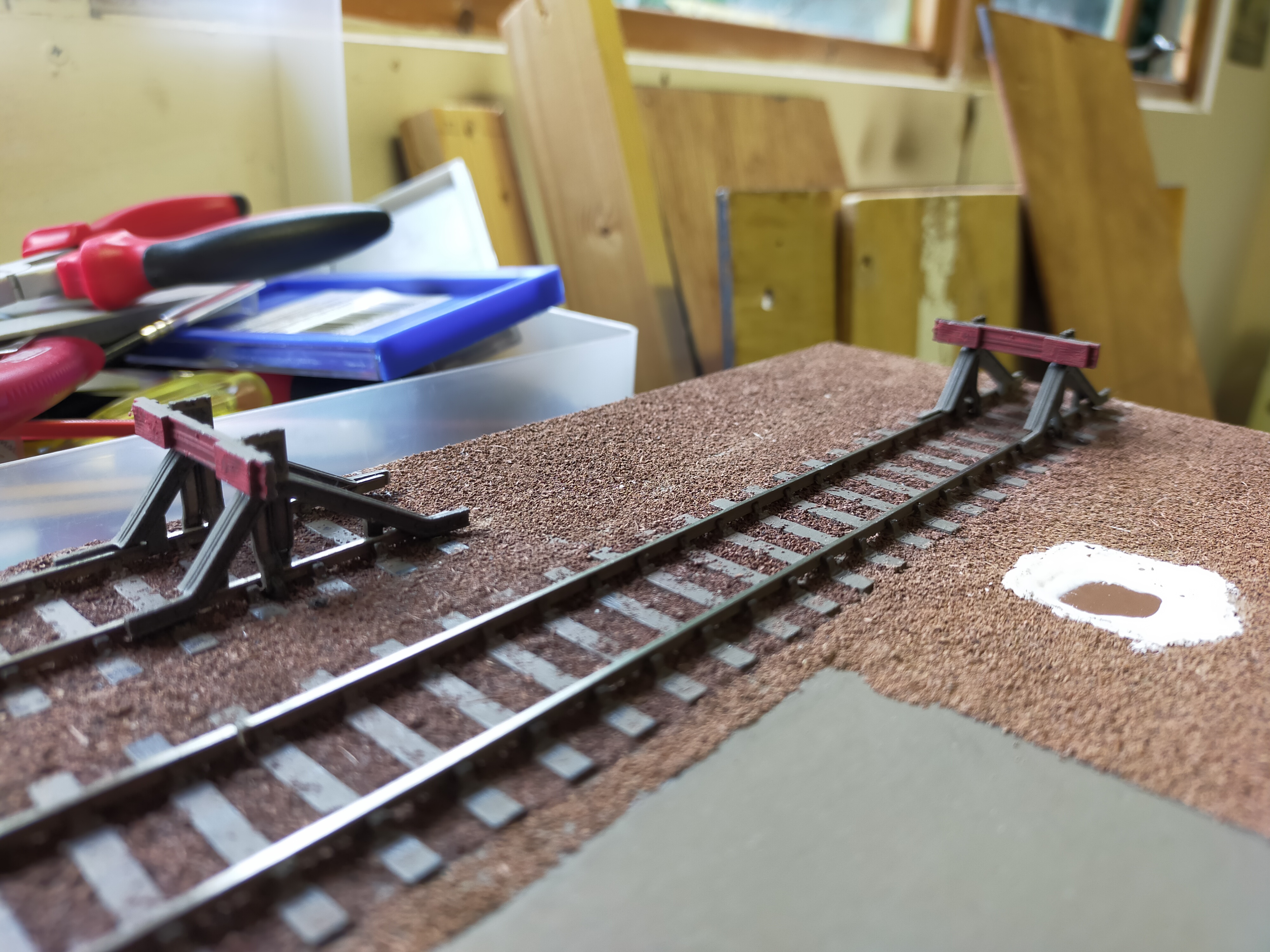
 Last edit: by col.stephens
Last edit: by col.stephens
Posted
Full Member
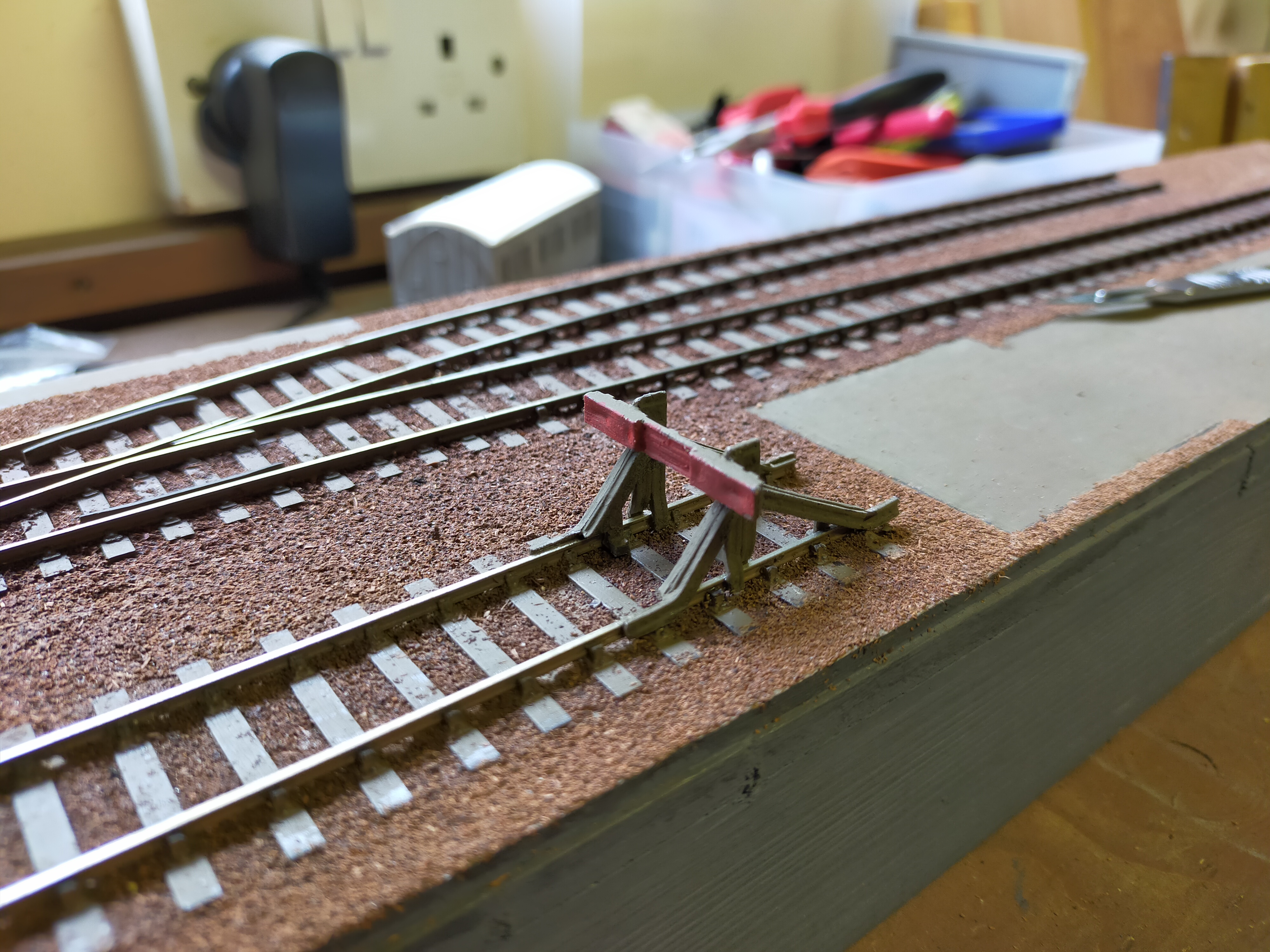
Posted
Full Member
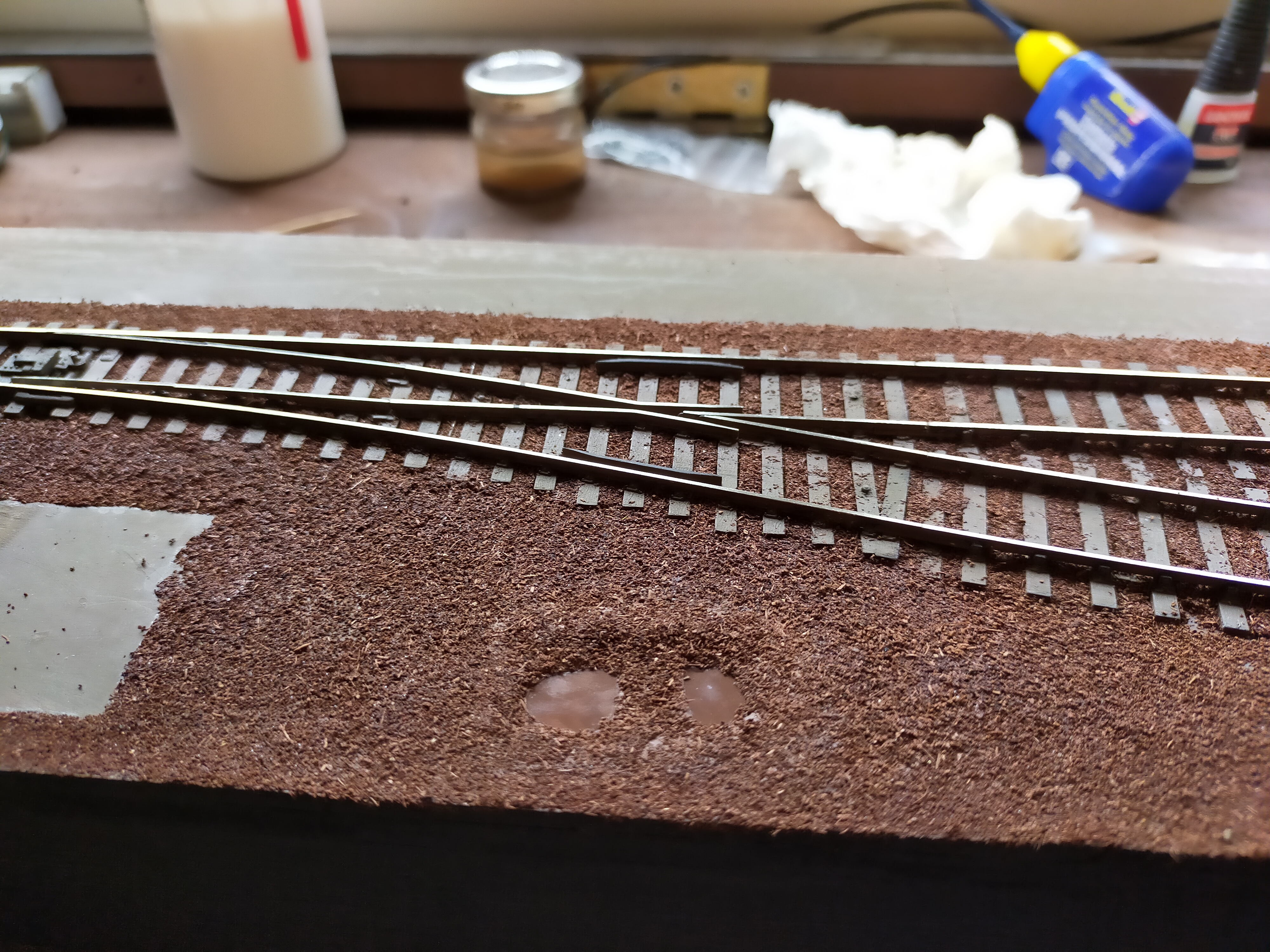
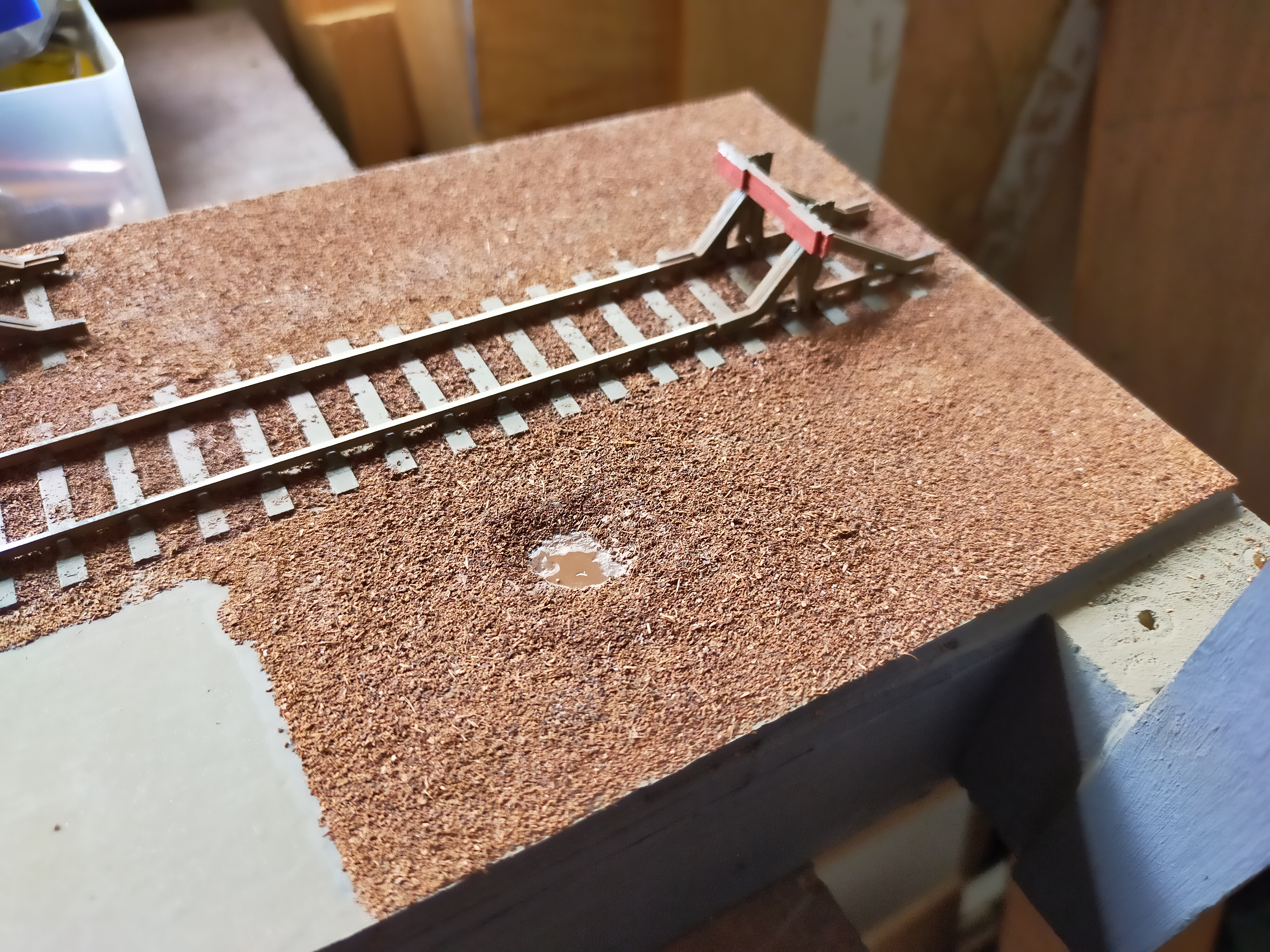
Terry
Posted
Full Member
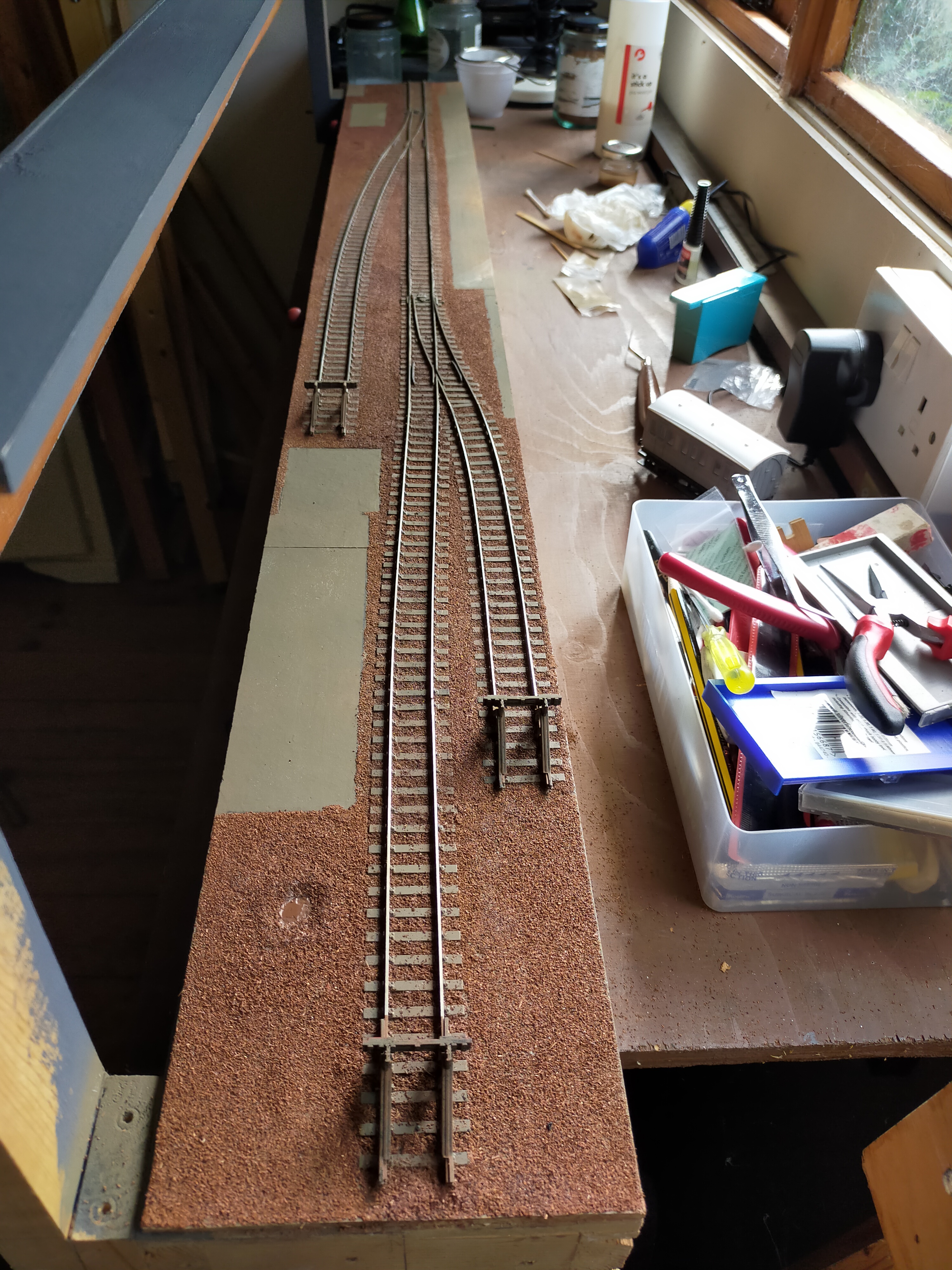
 Last edit: by col.stephens
Last edit: by col.stephens
Posted
Full Member
Here is the upturned layout showing the LED strip in place.
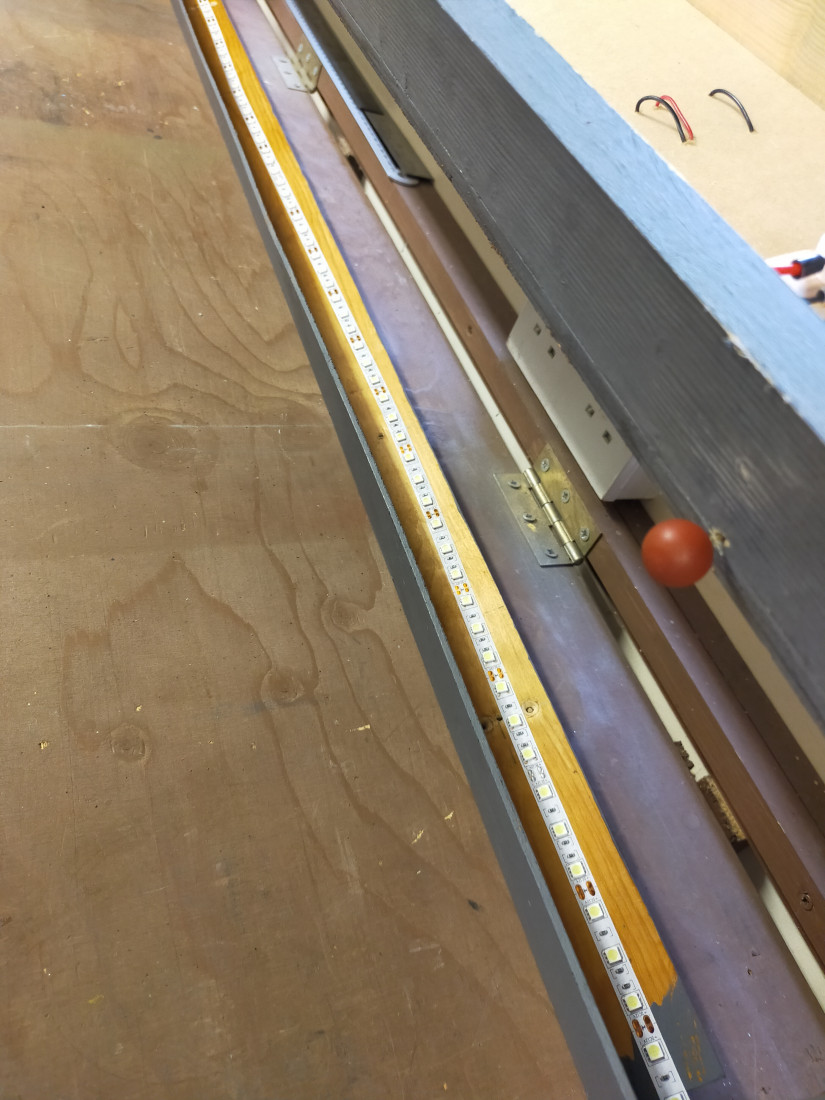
Terry
Posted
Full Member
Out came the large, cheap tubes of acrylic paint, purchased from the usual chain stores for about £2 each. I used just three colours: white, black, and a minute amount of yellow ochre. Plain water was liberally painted onto the surface. White was mixed with a small drop of black to give a light grey, which was quickly painted on and dabbed in places with a piece of kitchen roll to create a cloud effect. Hard edges were softened by brushing on plain water. Whilst wet, small amounts of diluted black were added to the surface to give the impression of dark storm clouds, with a minute dab of yellow ochre added in places and brushed over with water to disperse it. Experimentation is very much the order of the day, leaning towards less rather than more. One important thing to remember. As you work your way along the surface to be painted, do not allow the edges of the painted area to dry as you will get a hard edge in your sky. For instance, I was working from left to right along the 4ft backscene, painting about sixteen inches at a time. As I was working, I kept an eye on the right side of the painted area, and kept painting water over the paint edges to prevent them from drying until I was ready to move onto that area.
Sadly, when the buildings are in place much of the sky won't be seen. However, this is merely a backdrop to create the atmosphere. Just as in the theatre, the action will be taking place downstage (towards the audience).
Right-hand end of the backscene.
Terry
1 guest and 0 members have just viewed this.

